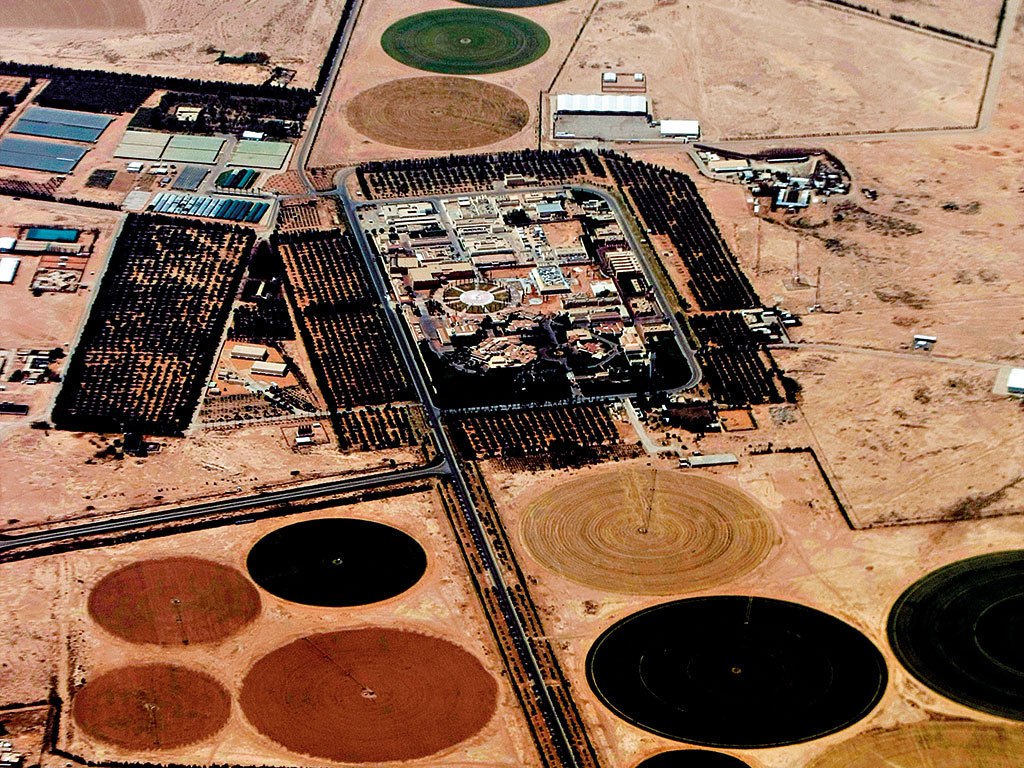Arabian frights: the Saudi struggle with oil prices
Saudi Arabia’s attempt to undermine oil-producing competitors has had some limited success, but the resulting low prices expose a disaster in the waiting

Agricultural fields in Saudi Arabia. Such industries are mere addendums to the country’s oil-dependant economy
Starting in the summer of 2014, despite declining world oil prices, OPEC members under the leadership of Saudi Arabia took the seemingly counterintuitive decision to maintain production levels. This increased supply on the world market, leading the price of a barrel of oil to plummet from roughly $100 in July 2014 to $50 in January 2015, with prices hovering around this low point for much of the rest of the first half of the year.
Most commentators seem to agree this decision was part of a strategy to kill the burgeoning US fracking industry in its infancy and undermine production for non-OPEC countries. The Saudi-led strategy seems to have worked in one sense: producers have cut back, stalled, delayed investment decisions, or halted a large number of drilling projects around the world, amounting to cuts of $100bn as of May, according to the Financial Times. Although a report by the Saudi Arabian Monetary Agency recently noted that, while future investments have been cut, producers were not so quick to stem “the flow of oil from existing wells”. Whatever the success of this strategy, however, Saudi Arabia itself is now reeling from the effects.
The kingdom needs the cost of a barrel of oil to remain at $105 to maintain its spending levels
Relying on reserves
Relying as heavily as they do on oil revenues, this year’s steep price decline has led to a gap in Saudi Arabia’s finances. In July, the kingdom had to raise $4bn from bonds – the first sovereign issuance in eight years. This was soon followed by another foray into domestic bond markets in August, with an attempt to raise another $27bn of funds. According to the Financial Times, the kingdom needs the cost of a barrel of oil to remain at $105 to maintain its spending levels. As a result, the Saudis have had to rely on $65bn of reserves they built up in boom years.
Despite this cushion, the country is expected to see a fiscal shortfall of $100bn this year. The decline in oil prices has not tempered the opulence of the monarchy’s state spending, with generous bonuses being bestowed upon state workers this year, capital spending being sustained at pre-price drop levels, and the country pursuing an increasingly expensive war against Houthi rebels in Yemen.
Mopping up
The problems facing Saudi Arabia now oil prices have collapsed, however, may become a longer-term issue, with 90 percent of its revenues coming from oil and little in the way of other industry to speak of. While conventional oil production in non-OPEC countries may have been cut back, the shale oil industry will not be so heavily affected. Even if some companies have gone out of operation, as The Telegraph noted: “The wells will still be there. The technology and infrastructure will still be there. Stronger companies will mop up on the cheap, taking over the operations.”
The shale oil industry is highly responsive. Once oil prices start to rise, production will boot up once again in the shale industry. As The Telegraph further noted: “Once oil climbs back to $60 or even $55 – since the threshold keeps falling – they will crank up production almost instantly.” What this may mean is that Saudi Arabia and other OPEC countries will be challenged by shale oil producers whenever prices rise, with the potential to keep prices low perpetually. If that is the case, the current Saudi budget deficit could become much more serious, putting the future economic prosperity of the kingdom at risk.













